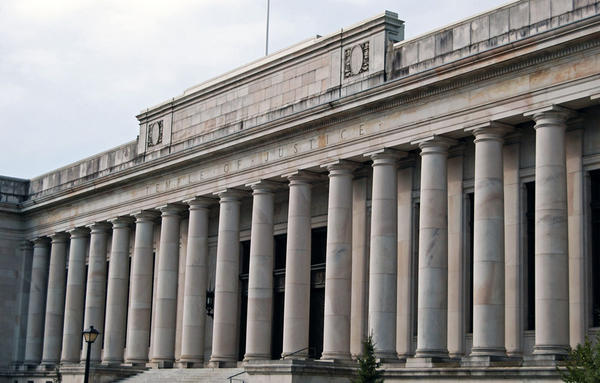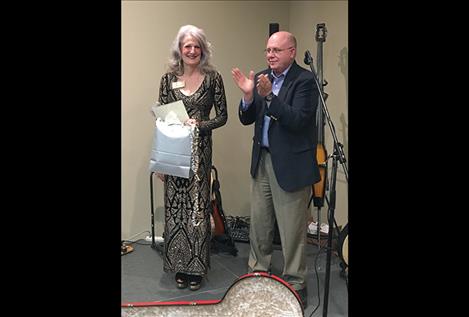
Credit: Kris Snibbe/Harvard Staff PhotographerKristen
Carpenter, the Oneida Indian Nation Visiting Professor of Law talks
about the state of American Indian Law in light of the conference on
indigenous rights.
Native Americans currently represent 1 percent of the U.S.
population, but thousands of years ago they were the indigenous
inhabitants of the territory known to some of them as Turtle Island and
eventually to others as North America. Today, there are 567 federally
recognized tribes. The largest are the Navajo Nation and Cherokee
Nation.
Harvard Law School, the Harvard University Native American Program, and the Harvard Native American Law Students Association held a a two-day conference in
October to examine relations between Native Americans and state and
federal governments. Keynote speakers included University of Colorado
Law School Dean S. James Anaya, Quinault Indian Nation President Fawn
Sharp, and U.S. Ambassador to the United Nations Keith Harper.
The Harvard Gazette interviewed Kristen Carpenter
’98, Oneida Indian Nation Visiting Professor of Law at HLS, Council
Tree Professor at University of Colorado Law School, and one of the
event organizers, on the history of American Indian law, the friction
between federal and tribal laws, and the rise of the indigenous rights
movement in the United States.
GAZETTE: Can you describe the state of Native American rights in the United States?
CARPENTER: It is mixed. On the one hand, American Indian tribes are
powerful, resilient communities, deeply steeped in tribal culture and
ways of life, and continuing to live in their homelands and territories
to this very day. As a matter of law, tribes have well-grounded and
longstanding rights commemorated in treaties made originally with
European nations and then with the United States. They also have rights
that are established in the U.S. Constitution and in federal statutory
law, which have long been recognized by the courts. In recent years,
however, there has been somewhat of a retrenchment in federal courts,
and especially in the Supreme Court, with respect to the recognition of
tribal jurisdiction and tribal statutory rights that were enacted to
remedy some of the past dispossessions American Indians endured.
GAZETTE: What are the main grievances of Native Americans toward the U.S. courts?
CARPENTER: My sense is that tribal governments are quite often
seeking dignity and respect in the courts. Indian tribes were here
before Europeans and others who came to what is now called North
America. Tribal governments engaged in treaty-making with Europeans
going back to the 1600s. Tribal rights to exercise their own laws over
their territories and their members are traceable to treaties. One
question in federal Indian law is often how to understand and implement
those historic arrangements today. This is a question not unlike that
faced in U.S. constitutional law, where a venerable document also
presents questions of contemporary interpretation. Secondly, while
federal Indian law clearly recognizes tribal self-government, various
parties challenge the jurisdiction of the tribal courts and regulatory
system. This sounds technical but what it really means is which
government and whose values are able to regulate people’s lives, lands,
and resources on a day-to-day basis. The foundational rules of federal
Indian law provide that tribes generally retain jurisdiction within
reservation boundaries, and especially over tribal citizens, and that
states have authority off the reservation. That’s oversimplifying the
situation and there are a lot of situations where things are a little
bit messier in reality.
GAZETTE: A few years ago, there was a messy case that
highlighted the strain between federal and tribal laws. A Cherokee girl
was given back to her adoptive parents after the Supreme Court ruled
that the Indian Child Welfare Act didn’t apply. Could you explain what
happened?
CARPENTER: Yes, this was the case of
Adoptive Couple v. Baby Girl,
decided by the Supreme Court in 2013. To explain it, I have to share
some history. The Indian Child Welfare Act of 1978 was enacted to
address the historic removal of Indian children from their parents for
purposes of their religious and social “assimilation.” In various
iterations, dating back to 1850, assimilation was a federal policy
implemented in part by religious organizations, state child welfare
workers, and private adoption agencies. One of the views animating these
practices was that Indian children would be “better off” with white
families. By the 1970s, one in four Indian children was being raised
away from their families. Congress noted the “wholesale separation” of
Indian children from their families had devastating consequences for the
children, who suffered high rates of psychological and physical trauma,
as well as the parents, siblings, and tribes who lost their children,
and passed ICWA to address this situations. Under ICWA, Indian parents
and tribes must receive notice of custody proceedings involving their
children, tribal courts have jurisdiction in some cases, and there is a
set of foster care and adoptive placement preferences prioritizing the
extended family and tribe.
In the Adoptive Couple case, a Cherokee baby was put up for adoption
by her non-Indian mother in a set of events that did not comply with
ICWA, such that the father — who was an active-duty serviceman — was
served with notice of the impending adoption four months after his
daughter’s birth and days before his deployment. When he returned from
Iraq almost two years later, the father was able to appeal the case and
the South Carolina Supreme Court ruled that ICWA had been violated,
granting him custody. The little girl then lived with her father,
siblings, and grandparents and Indian community for two years. But the
Supreme Court ruled ICWA didn’t apply because, according to Justice
Samuel Alito, the statute required a parent show “continuing custody” to
be eligible for ICWA’s protections. The little girl was then relocated
back to South Carolina with the adoptive couple.
GAZETTE: What’s your opinion about the outcome of the case?
CARPENTER: In my view, the case was wrongly decided. ICWA is supposed
to protect Indian families and remedy the legacy of federal policies
that disrupted Indian family custody. The Supreme Court, completely
missing Congress’ intent, created a new and narrow reading of the
statute to deny a fully capable, fit, and loving Indian father the
opportunity to bring up his daughter. Many in the Indian child welfare
community are working in domestic and international venues for reform
that will prevent this kind of outcome in the future.
GAZETTE: So the question is what’s the importance of Indian laws in U.S. jurisprudence?
CARPENTER: Indian tribes pose a lot of hard questions for the U.S.
legal system. They’re governments and communities that predate the
United States, but through conquest and colonization, they came to be
dispossessed of many rights, whether it’s land, jurisdiction, culture,
or family. Yet, those tribes still remain 500 years later through the
resilience and determination of their people as well as the strength and
beauty of their culture. Today Indian law tests the capacity of the
U.S. legal system to acknowledge and respect the pre-existing rights of
Indian tribes and to account for those interests and norms of legal
pluralism in a democratic system that is more comfortable with
individual rights. Those are real challenges. In my view, the answer
lies in the framework established by treaties and the Constitution,
specifically to respect the sovereignty and jurisdiction of tribes, for
the United States to negotiate with Indian tribes on a
government-to-government basis, and for cooperative approaches among all
three sovereigns to address the problems contemporarily facing us.
GAZETTE: Can you tell us whether those principles are being
used in the Dakota Access Pipeline situation, the most recent case of
friction between the federal government and tribal communities?
CARPENTER: The Standing Rock Sioux tribe opposes the construction of
the Dakota Access Pipeline less than half a mile from its reservation.
The pipeline is slated to travel under the Missouri River, the tribe’s
main source of drinking water, right through some of their sacred sites.
So when the Standing Rock people claim that their very way of life is
threatened now by the pipeline, I think they mean it quite literally.
These lands and waters were originally protected by the tribe’s own
laws, and later by the Treaty of Fort Laramie of 1851, which the U.S.
later violated, such that the contested lands are now owned by the
United States, managed by the Army Corps of Engineers. Various statutes
require federal agencies to “consult” with tribal nations about federal
undertakings that would affect their resources. The Standing Rock Sioux
and other tribes affected by the pipeline are litigating those rights in
the federal courts right now. In recognition of the spirit of those
laws, the Obama administration, through the Departments of Justice,
Interior, and the Army, has called for a halt to construction in order
more fully to consult with the affected tribes.
GAZETTE: What can the United States learn from other countries with indigenous populations?
CARPENTER: Currently in the United States, tribes’ aboriginal title,
meaning the land they have occupied since time immemorial, is not
recognized as “property” pursuant to the Fifth Amendment. The
Inter-American Commission of Human Rights has held, in a case involving
the Western Shoshone people, the rule of law in the U.S. thus violates
basic norms of property, equality, and non-discrimination. In cases
involving Nicaragua, Ecuador, Belize, Suriname, and others, the
Inter-American Court on Human Rights has recognized that property rights
grow out of indigenous peoples’ land tenure. Some of these countries
have, in turn, reformed their national laws to recognize tribes’
customary land tenure as a source of property rights and begin the
process of demarcating and titling those rights. While those reform
efforts are not without difficulty, I’d like to see the United States
also recognize Indian tribes’ aboriginal lands as being eligible for the
full set of property rights protections.
This story was originally published in the Harvard Gazette on October 21, 2016.































